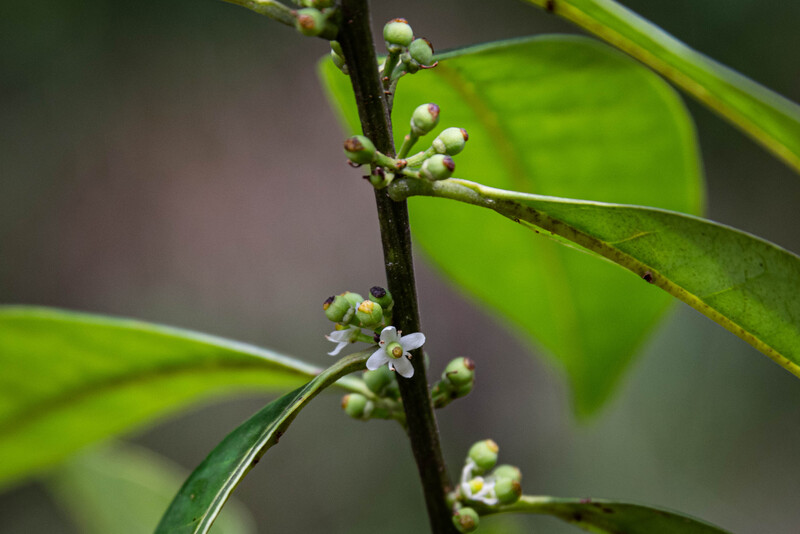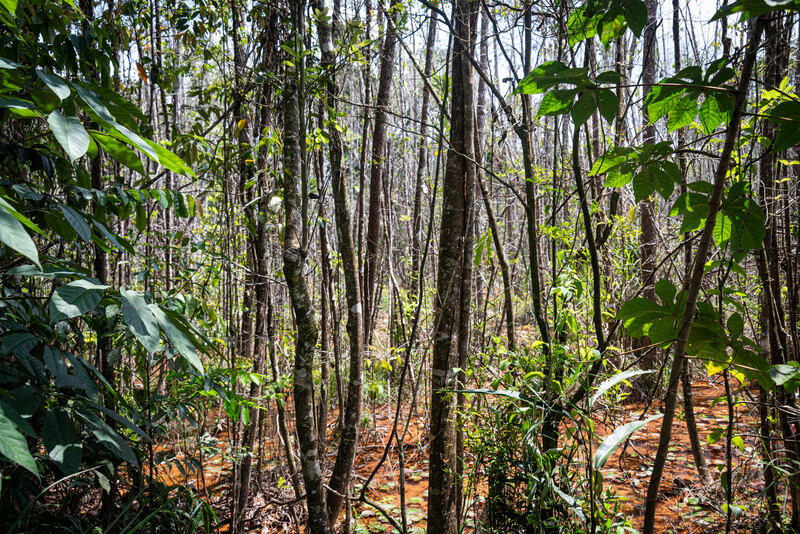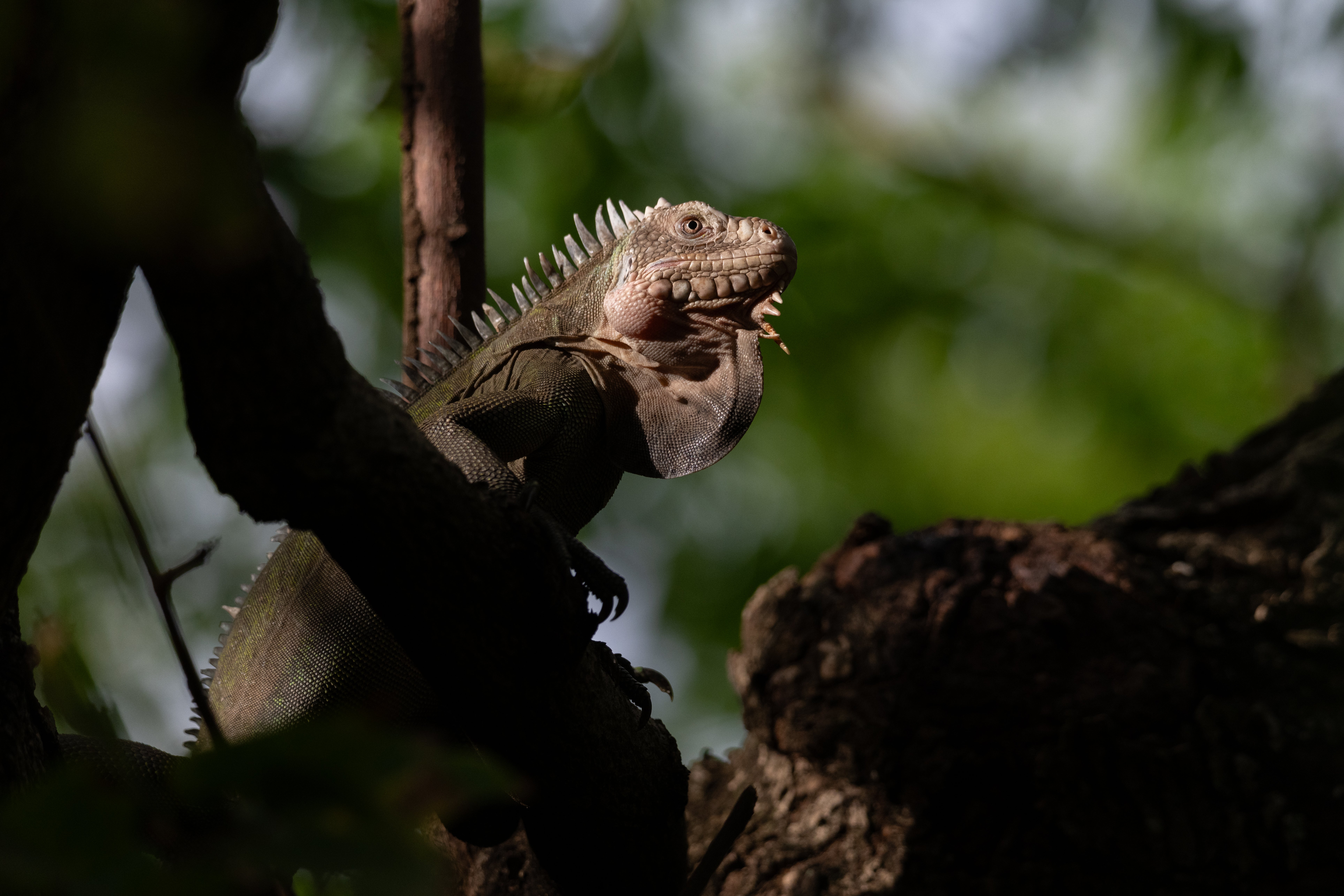An expedition team, searching Brazil’s Pernambuco state, rediscovered a small and inconspicuous holly tree (Ilex sapiiformis) that has eluded botanists and conservationists for nearly two centuries. The tree, which can reach between 26 and 40 feet in height (8-to-12 meters), was found in Igarassu in northeastern Brazil. The place where the team found the tree was once dense Atlantic tropical forest, but is now mostly urban areas surrounded and interspersed by sugarcane plantations.
The expedition team, led by Gustavo Martinelli, an ecologist with Navia Biodiversity Ltd., spent six days searching different areas in Recife and on March 22, they found four of the trees. The Pernambuco holly is one of the top 25 most wanted lost species by the Search for Lost Species, and it is the ninth to be rediscovered since the project launched in 2017. “The Pernambuco holly is in an emergency situation now,” said Martinelli. “It could be on the verge of extinction because, as far as we know, there are just four individuals of the species. And these individuals are in an area of degraded riparian forest, despite being protected by law.”
The Pernambuco holly was first collected for western science by the naturalist George Gardner in 1838 on an expedition, and it was later officially described by Siegfried Reissek in 1861. Until the recent rediscovery, Gardner’s collection of the species was the only known confirmed sighting. For several months, before heading into the field to search for the Pernambuco holly tree, Martinelli worked with a small team of researchers to meticulously scour the collections of herbariums, botanical gardens, museums and academic institutions for samples of the tree. With the help of Juliana Alencar, a local researcher and the project assistant for the expedition, and Milton Groppo, a researcher at the University of São Paulo, Martinelli searched virtual databases, combing through 12,000 samples from around the world, but couldn’t find a match.
After coming up empty searching virtual collections, they visited herbaria collections in Brazil that haven’t been digitized. That effort yielded more success. They found two unidentified specimens of the Pernambuco holly: one that was collected in 1962 and another in 2007. The 2007 specimen had much more precise and helpful information about where it was collected, helping the field search. The expedition team eventually identified four areas in the metropolitan region of Recife to search for the Pernambuco holly. There are many different species within the group of holly trees that the Pernambuco holly belongs to and identifying them is extremely difficult. Each Pernambuco holly plant is either male or female, meaning it has either stamens (male reproductive parts), or pistils (female productive parts). The team’s specialists and parabotanists were able to identify the Pernambuco holly from its tiny green flowers. They found four of the trees–two males and two females–in a forested area on the banks of a small river. "The moment when we found Ilex sapiiformis, it seemed that the world had stopped turning its gears,” said Alencar. “Nature surprises us. Finding a species that hasn't been heard of in nearly two centuries doesn't happen every day. It was an incredible moment, and the emotion of it was felt throughout the entire team. When I looked at Professor Milton Groppo, I saw that he had tears in his eyes.”
A team from Jardim Botânico de Recife is monitoring the four Pernambuco holly trees the expedition team found, returning to the site weekly to see if the trees are fruiting. The team hopes to collect seeds of the tree and germinate them. "We were all anxious to find the plant,” said Groppo. “And it was exciting when we found the first individual of Ilex sapiiformis, thanks to the keen eyes of Mr. Lenilson, who was able to find some white flowers in a tree alongside the dirt road. It was like finding a long-lost and long-awaited relative that you only know by old portraits. Now, we will be able to better study the species and think about actions to protect and propagate it given that we now know that it is not extinct in nature.” The search for more Pernambuco holly trees isn’t over yet. Martinelli is hoping to organize additional searches with Jardim Botânico de Recife and other local partners in Recife to find more individuals of the species. He also hopes to work with partners to better protect the forest in Recife where the Pernambuco holly was found and establish a captive breeding program for the tree.
“It’s incredible that the Pernambuco holly was rediscovered in a metropolitan area that is home to nearly six million people,” said Christina Biggs, lost species program officer, Re:wild. “We don’t often think of plants as being lost to science, because they don’t move like animals, but they are every bit as integral to the ecosystems they are native to. Even if a plant hasn’t had a confirmed sighting in 186 years, it could still be hanging on in the last vestiges of the wild somewhere, and this tree is a perfect example of why it’s important to keep looking.” The full expedition team searching for the Pernambuco holly included: Gustavo Martinelli, Juliana Alencar, Milton Groppo, Ladivania Medeiros do Nascimento, researcher and director of Jardim Botânico de Recife, Marcos Chagas, parabotanist and field assistant, Lenilson Barbosa dos Santos, parabotanist and field assistant. Jefferson Maciel, secretary of the environment for the municipality of Recife, also collaborated with the expedition team. Since the Search for Lost Species program launched in 2017, working with partners across the globe, Re:wild has confirmed the rediscovery of: Jackson’s climbing salamander in Guatemala, both the Wallace’s giant bee and the velvet pitcher plant in Indonesia, the silver-backed chevrotain in Vietnam, the Somali sengi in Djibouti, the Voeltzkow’s chameleon in Madagascar, the Fernandina giant tortoise in the Galápagos, and the Sierra Leone crab in Sierra Leone.
# # #Photo: Pernambuco holly (Ilex sapiiformis), a tree that has been lost to science for 186 years, was rediscovered in Recife, Brazil. It is the ninth species to be rediscovered by the Search for Lost Species since 2017. (Photo by Fred Jordão)Re:wildRe:wild protects and restores the wild. We have a singular and powerful focus: the wild as the most effective solution to the interconnected climate, biodiversity and human wellbeing crises. Founded by a group of renowned conservation scientists together with Leonardo DiCaprio, Re:wild is a force multiplier that brings together Indigenous peoples, local communities, influential leaders, nongovernmental organizations, governments, companies and the public to protect and rewild at the scale and speed we need. Learn more at rewild.org.
















Devin Murphy
Writer
Devin Murphy is Re:wilds’s senior communications specialist and helps Re:wild and its partners tell stories about the work they do to protect wildlife and wildlands around the planet. Her favorite stories about conservation include fascinating and little-known species and the dedicated humans protecting them.



